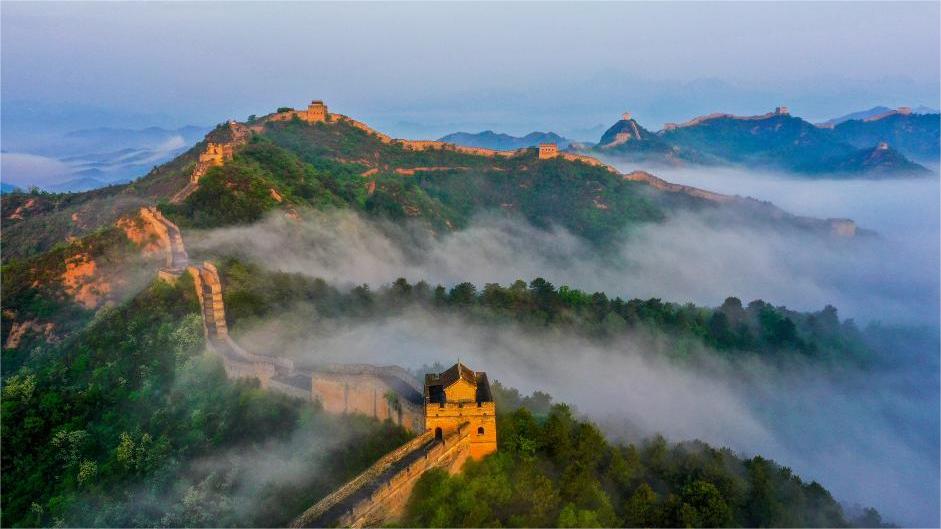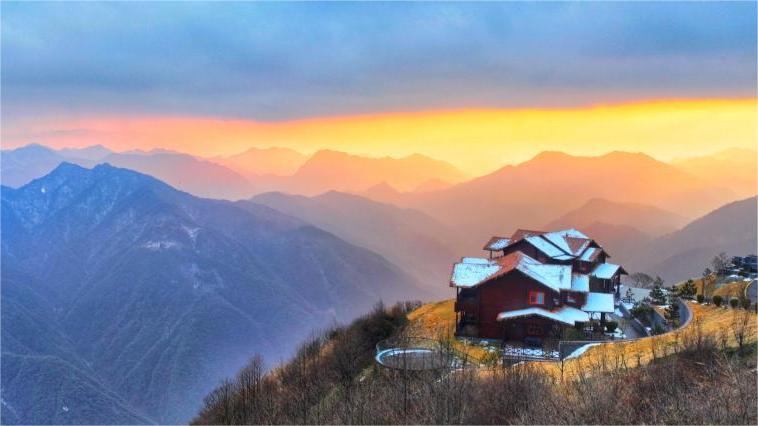High-speed railway puts millennia-old "porcelain capital" on faster development track
NANCHANG, Dec. 29 (Xinhua) -- For Peng Bin, a teacher at Jiangxi Arts &Ceramics Technology Institute in Jingdezhen, dubbed the "porcelain capital," in east China's Jiangxi Province, a new life came earlier than the new year.
It used to take Peng nearly three hours to return to his hometown Yugan. Starting from Dec. 27, it would only take him about 35 minutes for the trip thanks to the operation of a new high-speed railway that boasts a designed speed of 350 km per hour.
The high-speed railway linking Peng's workplace in Jingdezhen and his hometown is part of the 560-km-long Hangzhou-Nanchang high-speed railway, whose section connecting Huangshan City in Anhui Province and Nanchang City in Jiangxi Province was officially put into use Wednesday following over five years of construction.
The route passes through a region rich in tourist attractions featuring scenic lakes, mountains, ancient villages, and cultural treasures like porcelain and tea.
Jingdezhen is one of the railway's major beneficiaries as well as attractions, as increasingly convenient transport has boosted the development of the local porcelain industry by facilitating goods and personnel exchanges.
The time-honored porcelain hub gained access to railway services in 1982, blazing a new trail of porcelain sales other than water and road transport. In late 2017, Jingdezhen began electrical multiple unit (EMU) train services with a designed speed of 200 km per hour.
In the first half of 2023, the city received 28.11 million visits, up 57.9 percent year on year, and the total tourism revenue reached 27.14 billion yuan (about 3.83 billion U.S. dollars), an increase of 87.6 percent.
"We expect a boost in passenger trips after the new railway route," said Lu Xiaojun, head of the Jingdezhen North Station, which has undertaken extension and face-lift projects to cater to the new high-speed railway service.
Local tourism attractions are also expecting growing inflows of visitors from a wider range of regions.
Taoyang Alley, once the site of an imperial kiln for producing porcelain used in the court, is expected to receive more visitors from cities like Beijing, which will reach Jingdezhen faster thanks to the newly operational high-speed railway.
"The high-speed railway will not only bring more travelers, but also business people and porcelain lovers from home and abroad," said Hu Jingping, general manager of Jingdezhen International Ceramics Exposition and Trading Center, a comprehensive platform to showcase and sell ceramics products.
In the first half of this year, Jingdezhen's ceramics industry saw its output value up by 23.8 percent year on year, with that for technologically advanced ceramics rising 239 percent.
"In additional to economic benefits, the high-speed railway will fast-track the spread of Jingdezhen's charming ceramics culture, which is key for the industry's growth in the long run," Hu said.
Photos
Related Stories
Copyright © 2023 People's Daily Online. All Rights Reserved.









